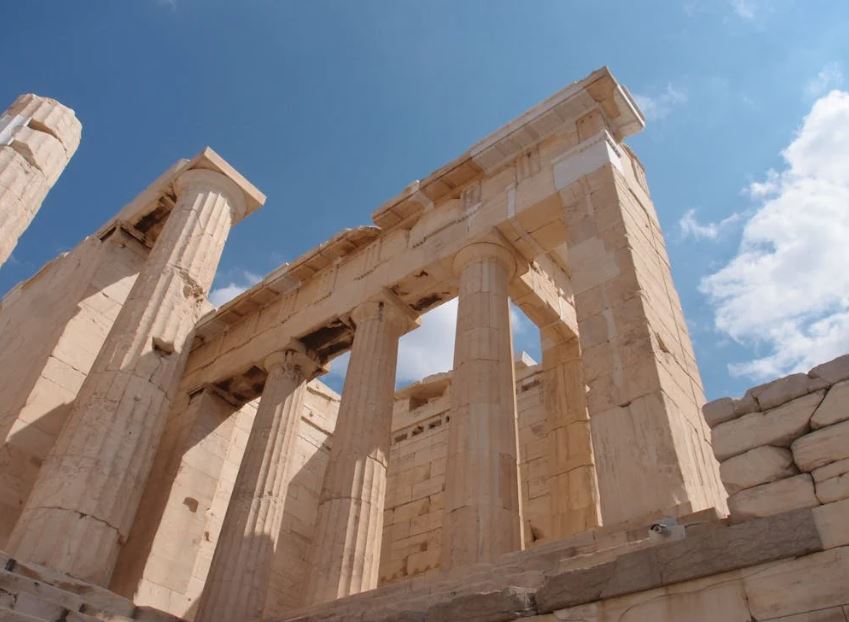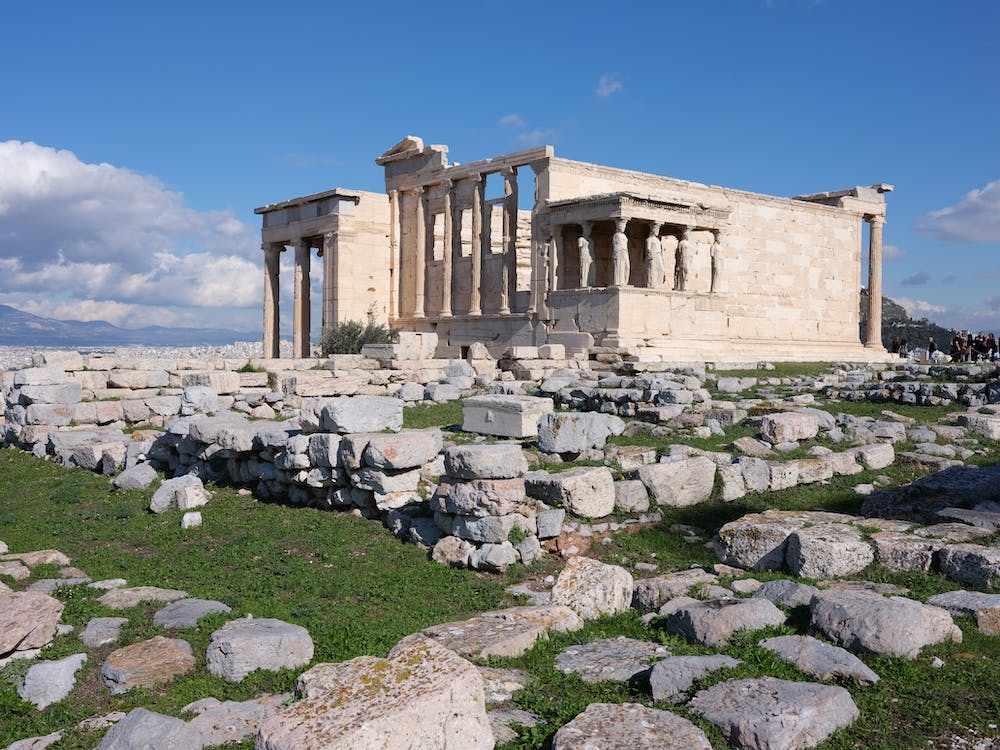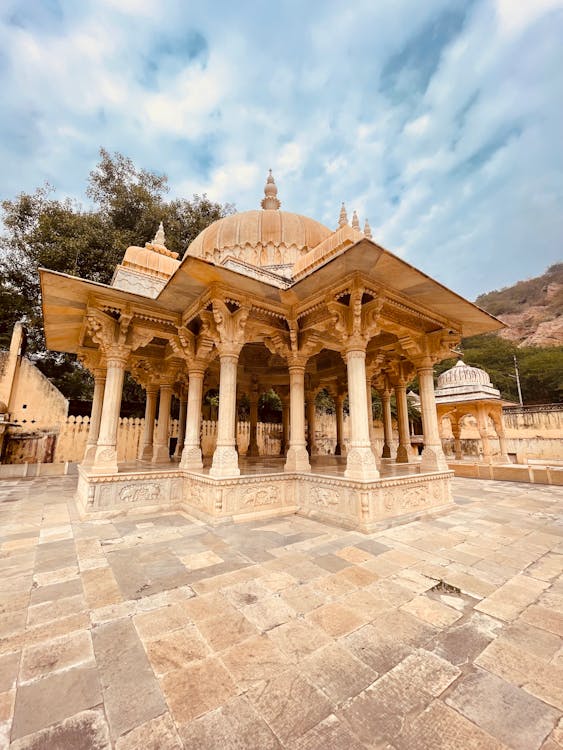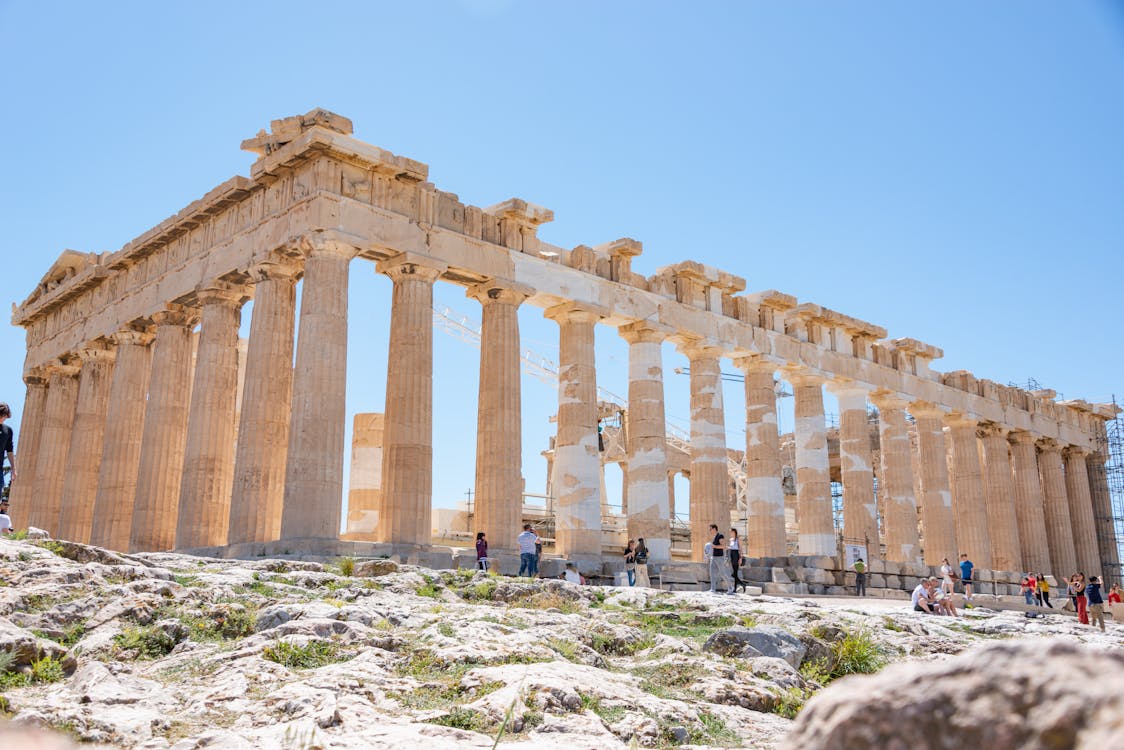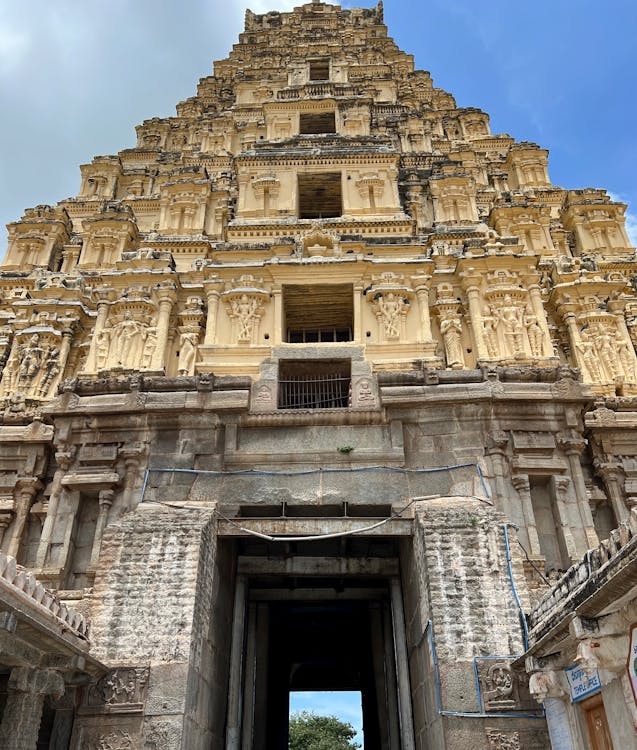The ancient Greeks are renowned for their monumental contributions to architecture, significantly impacting Western architectural traditions. Among these, Greek temples stand out, not just as places of worship but as embodiments of aesthetic and structural perfection. Central to the design of these temples were the Greek columns, which were not only functional but also deeply symbolic. This blog post delves into the role of Greek columns in temple architecture, exploring their origins, variations, symbolic meanings, and lasting influence on the architectural landscape.
Origins and Evolution
The origins and evolution of Greek architecture are a fascinating journey through time, marked by incremental innovations and the assimilation of various cultural influences. This journey begins in the Bronze Age with the Minoans and Mycenaeans, whose architectural practices laid the groundwork for what would become the hallmark of Greek architectural excellence.
Minoan Influence
The Minoans, flourishing on the island of Crete, were known for their palatial complexes, such as the sprawling palace at Knossos. These structures were characterized by a central courtyard surrounded by multi-storied buildings, often with elaborate frescoes and sophisticated drainage systems. The Minoans utilized wooden columns, which were narrower at the base and wider at the top, a feature known as “inverted tapering.” This unique style contributed to the airy and light-filled spaces of Minoan architecture, setting a precedent for the importance of columns in architectural design.
Mycenaean Contribution
Following the Minoans, the Mycenaean civilization emerged on the mainland of Greece, known for their massive “Cyclopean” fortifications and monumental gateways such as the Lion Gate at Mycenae. The Mycenaeans adopted the column from Minoan architecture but adapted it to their own purposes, using it in the entrances of their palatial structures and tombs. These columns, though still wooden, began to take on a more structured and standardized form, hinting at the iconic orders that would define later Greek architecture.
Transition to Stone
As Greek societies transitioned from the Dark Ages into the Archaic period, there was a significant shift in architectural materials and techniques. The limitations of wood, particularly its vulnerability to decay and fire, prompted a move towards more durable materials. Stone, abundant in the Greek landscape, became the material of choice for public and sacred buildings.
This transition to stone was not merely practical but also allowed for a greater degree of artistic expression. Stone columns could be carved with precision, creating intricate fluting and elegant capitals. This period saw the emergence of the distinct Doric and Ionic orders, each with its own set of rules and proportions, reflecting the growing sophistication of Greek architectural and aesthetic principles.
Architectural Sophistication
The evolution of Greek architecture is marked by an increasing complexity and refinement in the design of columns and the structures they supported. The Doric order, characterized by its sturdy columns with simple, rounded capitals, reflected the Greeks’ appreciation for harmony, proportion, and strength. The Ionic order, with its more slender columns and ornate capitals featuring volutes (spiral scrolls), introduced a new level of elegance and lightness.
These developments were not merely aesthetic but also technological. The Greeks mastered the art of optical refinements, such as entasis (a slight bulging of the column shaft) and the subtle curvature of stylobates (the platform on which columns stand), to correct optical illusions and create the impression of perfection.
In addition to learning about the Timeless Elegance of Greek Columns in Ancient Temples, learn about the Four Defining Characteristics of Renaissance Architecture. Visit Exploring Elegance – The Four Defining Characteristics of Renaissance Architecture.
Types of Greek Columns
The Greek architectural orders, distinguished by their columnar styles, represent more than just structural elements; they embody the cultural, philosophical, and aesthetic values of their times. Let’s delve deeper into the distinctive features and historical contexts of the Doric, Ionic, and Corinthian orders.
Doric Order – The Embodiment of Simplicity and Strength
The Doric order is often considered the earliest and most austere of the Greek architectural orders. Originating in the western Dorian region of Greece, it was widely employed in mainland Greece and Magna Graecia (southern Italy and Sicily). Doric columns are notable for their robust and sturdy appearance, with fluted shafts that stand directly on the stylobate without a base. The capitals are simple and unadorned, consisting of a rounded echinus and a square abacus.
The entablature in Doric architecture is equally straightforward, featuring a plain architrave, a frieze with alternating triglyphs (three vertical grooves) and metopes (square panels often carved with relief sculptures), and a simple cornice. The Doric order exemplifies the Greek virtues of simplicity, functionality, and harmony, mirroring the ideals of a society that valued strength and discipline.
Ionic Order – Grace and Balance
The Ionic order, originating from the Ionian Greeks in the eastern Aegean islands and Asia Minor, presents a stark contrast to the Doric order’s austerity. Ionic columns are more slender and elegant, with a height-to-diameter ratio that makes them appear taller and more graceful. They are mounted on a base composed of several stacked rings, and their shafts are fluted like those of Doric columns but with a greater number of flutes, which contributes to their refined appearance.
The defining feature of the Ionic capital is the volute, a spiral scroll that lends an air of sophistication and dynamism. The entablature in Ionic architecture is more elaborate than in the Doric order, with a continuous frieze that often features relief sculptures depicting mythological or historical scenes. The Ionic order reflects the cultural and artistic sophistication of the Ionian Greeks, embodying ideals of balance, elegance, and beauty.
Corinthian Order – The Peak of Ornamentation
The Corinthian order represents the apex of Greek architectural ornamentation and was developed later than the Doric and Ionic orders. It is characterized by its lavishly decorated capitals, adorned with acanthus leaves and sometimes other floral motifs, creating a lush, organic appearance. The Corinthian capital’s complexity and beauty make it a symbol of artistic achievement and innovation.
Though less commonly used in Greek architecture than the Doric and Ionic orders, the Corinthian order gained significant popularity in Roman architecture, where it was often employed in grand and ceremonial contexts. Its elaborate nature made it suitable for buildings that aimed to impress or convey luxury and sophistication.
Discover more Timeless Architecture. Visit Exploring the Timeless Elegance of Classical Period Architecture.
Symbolism and Functionality
The symbolism and functionality of Greek columns extend beyond their architectural forms to encompass a broader narrative that intertwines with the cultural and spiritual life of ancient Greece. These columns were not just supports for roofs; they were integral components of a temple’s identity, reflecting the deity’s character and the community’s values and beliefs.
- Symbolic Dimensions in Spacing and Number – The arrangement and number of columns in Greek temples were deliberate choices, laden with symbolic meanings. The peristyle, a surrounding colonnade found in many Greek temples, served both a practical and symbolic purpose. It provided a transitional space between the outside world and the sacred interior, symbolizing the journey from the profane to the sacred. The number of columns could also be significant; for example, a temple might have six columns across the front (hexastyle) or eight (octastyle), with the choice often reflecting the temple’s size, importance, or the deity’s attributes.
The Parthenon, with its majestic Doric peristyle, exemplifies this interplay between form and symbolism. The temple’s robust columns not only support the structure but also stand as a testament to Athena’s virtues of wisdom and warfare, embodying the strength and resilience of the city of Athens itself.
- Architectural Alignment and Orientation – The orientation of Greek temples was another aspect where functionality met symbolism. Many temples were oriented east-west, with the entrance facing east to greet the rising sun, symbolizing enlightenment and rebirth. This alignment connected the physical structure with celestial movements, embedding cosmic significance into the temple’s layout.
The precise alignment also had practical implications for religious ceremonies and festivals, which were often timed to coincide with solstices, equinoxes, or other astronomical events. The interplay of light and shadow cast by the columns during these times added a dynamic element to the temple’s architecture, transforming the static structures into participants in the sacred rituals.
- Integration with the Natural Landscape – Greek temples were often situated in locations that held historical, spiritual, or mythological significance, with their design harmonizing with the surrounding landscape. The positioning of columns and the temple’s overall layout were carefully considered to achieve a balance with nature, reflecting the Greeks’ reverence for the natural world and its deities.
This integration extended to the use of local materials in column construction, further rooting the temple in its specific context and endowing it with a sense of belonging to the landscape. The natural variations in the stone, along with the changing light and seasons, would animate the temple’s facade, creating a living dialogue between the structure and its environment.
The symbolism and functionality of Greek columns, along with the spatial dynamics of temple architecture, reveal a sophisticated interplay between form, purpose, and meaning. These elements worked in concert to create spaces that were not only architecturally sound but also deeply resonant with the spiritual and philosophical ethos of ancient Greece. The enduring legacy of these structures lies not just in their physical beauty but in their ability to convey complex ideas and connect the human and divine realms through the medium of stone and light.
Architectural Influence
The architectural influence of Greek columns has been profound and enduring, shaping the trajectory of Western architecture through various epochs. The elegance, proportion, and symbolism embedded in these columns made them a cornerstone of architectural design, influencing a wide array of structures across different periods and regions.
Roman Adaptation and Integration
The Romans, renowned for their architectural ingenuity, were greatly influenced by Greek architecture. They embraced Greek columns, incorporating them into their vast array of buildings, from temples and basilicas to public forums and amphitheaters. However, the Romans were not mere imitators; they adapted and evolved these classical forms to suit their own architectural language and needs. For instance, while maintaining the decorative aspects of Greek columns, the Romans often used them more as ornamental features than as structural necessities, embedding them into walls or using them to frame niches and entrances.
This synthesis of Greek aesthetics with Roman engineering prowess gave rise to iconic structures like the Pantheon and the Colosseum, where the classical orders were employed with a new sense of scale and versatility. The Roman adaptation of Greek columns thus served as a crucial bridge, ensuring the continuity and evolution of classical architectural principles into the post-classical world.
Renaissance Revival
The Renaissance period in Italy marked a fervent revival of classical antiquity, driven by a renewed interest in Greek and Roman culture, philosophy, and art. Architects of the Renaissance, such as Andrea Palladio, turned to ancient Greek architecture for inspiration, seeking to embody the harmony, proportion, and balance that characterized Greek columns and temples.
Palladio, in particular, was instrumental in popularizing the use of Greek columns through his designs and his influential treatise, “I Quattro Libri dell’Architettura” (The Four Books of Architecture). His villas and churches, characterized by symmetrical plans and classical facades, reintroduced Greek columns to the architectural vocabulary, emphasizing their aesthetic and structural roles.
Neoclassical Period and Beyond
The Neoclassical period, which emerged in the mid-18th century, saw a more pronounced and widespread revival of classical architecture, spurred by archaeological discoveries and a growing fascination with antiquity. Greek columns became emblematic of this movement, epitomizing the quest for purity, clarity, and simplicity.
This revival extended beyond Europe, influencing the architectural language of the newly independent United States, where Greek columns were adopted as symbols of democracy, reason, and the classical ideals that underpinned the nation’s founding principles. The United States Capitol, with its stately Corinthian columns, stands as a testament to the enduring appeal and symbolic power of Greek architectural forms.
Contemporary Echoes
The legacy of Greek columns continues to resonate in contemporary architecture, where they are employed not only in neoclassical revival buildings but also in modern structures seeking to evoke a sense of grandeur, tradition, or civic virtue. Whether in the form of literal reproductions or abstract interpretations, the influence of Greek columns remains a testament to their timeless beauty and enduring relevance.
The journey of Greek columns from the ancient temples of Greece to the varied landscapes of global architecture reflects their unparalleled influence on the built environment. Through centuries of adaptation and revival, these classical forms have retained their ability to inspire, conveying a sense of order, beauty, and continuity that bridges past and present. The architectural legacy of Greek columns, characterized by their adaptability and symbolic depth, continues to inform and enrich our architectural heritage.
Contemporary Relevance
The contemporary relevance of Greek columns in architecture is a testament to the timeless appeal and enduring values they represent. In a world that increasingly values sustainability, innovation, and cultural identity, Greek columns serve as a bridge connecting the past with the present, offering inspiration and grounding in the principles of classical beauty, proportion, and harmony.
- Symbol of Democratic Ideals and Civic Virtue: Greek columns, particularly in public and governmental buildings, have come to symbolize democratic ideals and civic virtue, drawing a direct line from the ancient Greek polis to modern democratic states. The use of Greek architectural elements in structures such as courthouses, libraries, and capitols serves as a visual reminder of the origins of democracy and the values of justice, governance, and public service. This architectural language speaks to the principles of transparency, durability, and community that are central to democratic institutions.
- Educational Institutions and Cultural Edifices: Educational institutions have long embraced Greek architectural motifs, including columns, to signify the pursuit of knowledge and the continuation of classical learning and wisdom. Universities and schools featuring Greek columns in their architecture often seek to align themselves with the ideals of enlightenment, reason, and academic excellence that were cherished in ancient Greece. Similarly, museums, cultural centers, and libraries adorned with Greek columns evoke a sense of respect for history, culture, and the arts, inviting reflection and intellectual engagement.
- Integration in Modern and Contemporary Architecture: While Greek columns are often associated with neoclassical architecture, their influence extends into modern and contemporary architectural practices as well. Architects have reinterpreted classical columns in innovative ways, using new materials and forms to evoke the essence of classical order while aligning with modern aesthetics and functional requirements. This creative dialogue between the old and the new highlights the adaptability of Greek columns and their capacity to inspire beyond traditional contexts.
- Symbolism in Urban and Landscape Design: In urban squares, public parks, and memorial sites, Greek columns often serve as focal points or commemorative elements, contributing to the identity and symbolism of public spaces. These columns can stand as memorials to historical events, figures, or ideals, embodying a sense of continuity and collective memory. The incorporation of classical elements in landscape design also reflects a desire to harmonize built environments with natural settings, echoing the ancient Greek appreciation for the beauty of nature.
The enduring relevance of Greek columns in contemporary architecture underscores their versatility, symbolic depth, and aesthetic appeal. Whether anchoring monumental public buildings, gracing educational campuses, or reimagined in modern designs, these classical forms continue to resonate with architects, planners, and the public alike. By bridging millennia, Greek columns remind us of the enduring human quest for beauty, order, and meaning in the built environment, reaffirming the timeless nature of classical principles in shaping our spatial experiences.
Conclusion
Greek columns are a testament to the ancient Greeks’ architectural ingenuity, aesthetic sensibility, and philosophical depth. They were not mere structural necessities but were imbued with symbolic meanings, reflecting the cultural and religious milieu of their time. The legacy of Greek columns, with their enduring beauty and symbolic richness, continues to influence architectural thought and practice, bridging past and present in the continuous flow of human creativity. Their role in temple architecture is a profound reminder of the power of architectural elements to convey complex ideas and emotions, transcending their immediate functional roles to achieve a timeless relevance.

